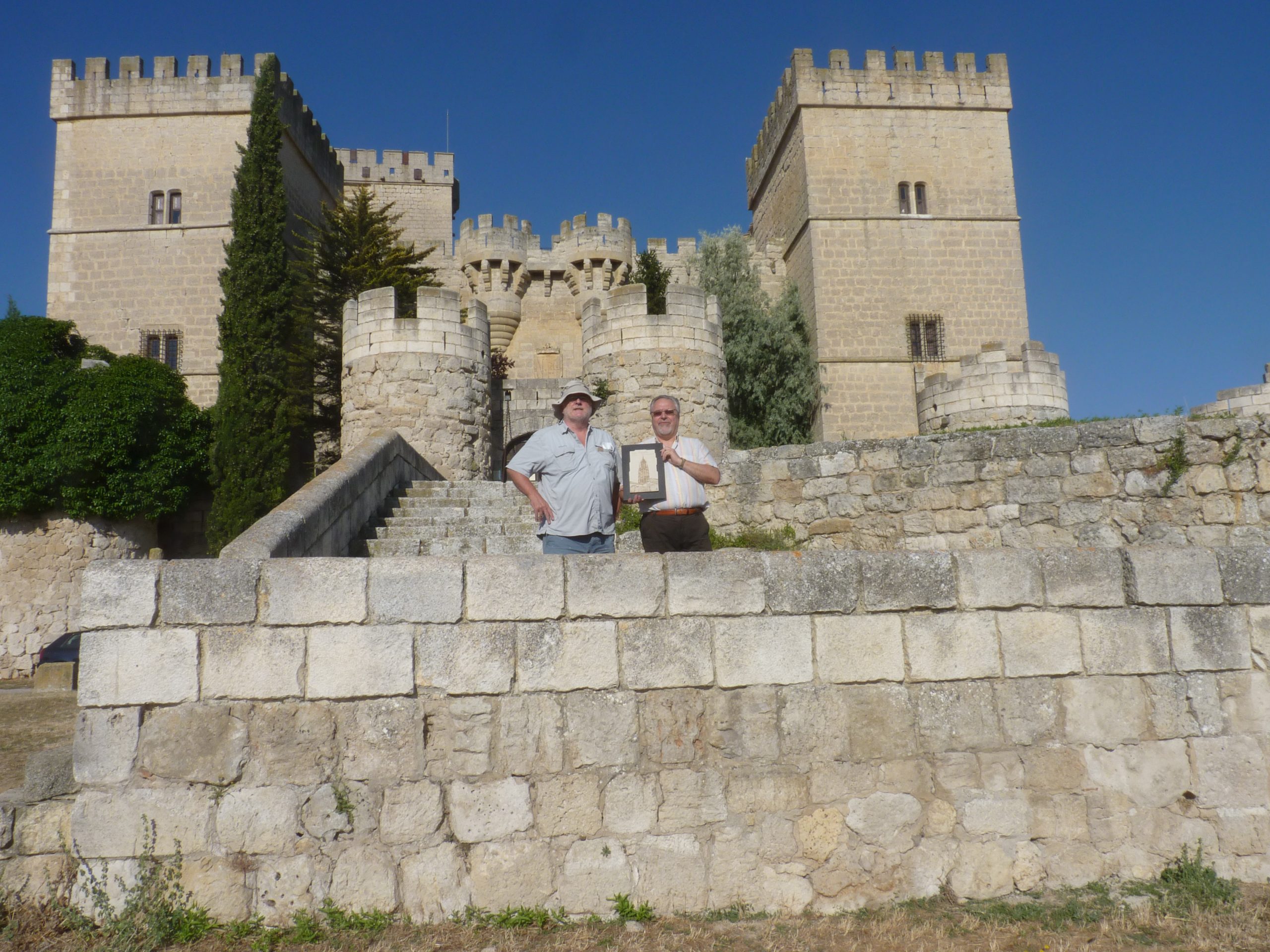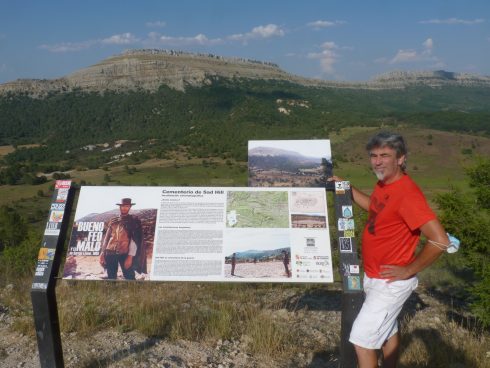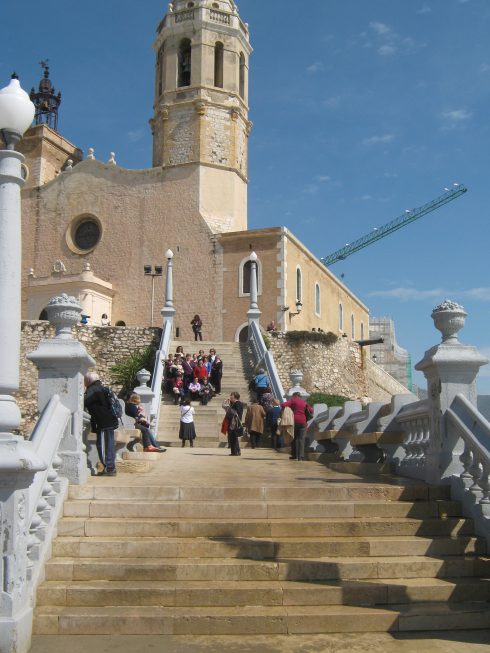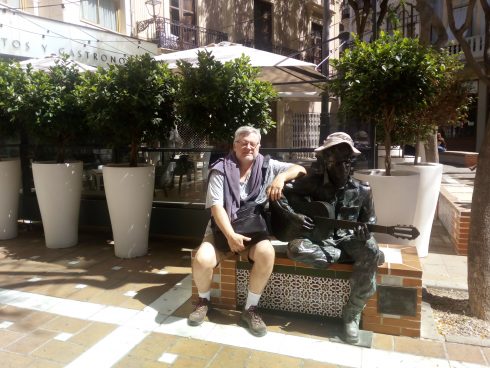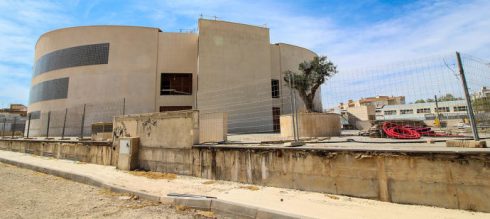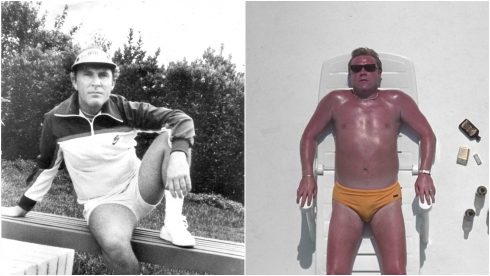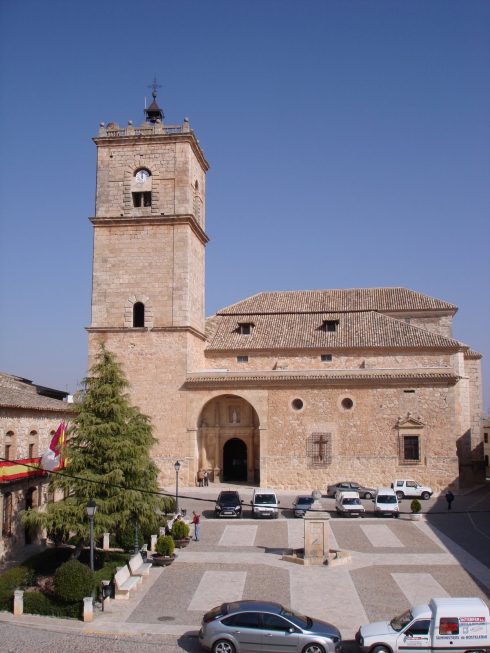In the Samuel Bronston epic El Cid fights for a Spain in which Moors and Christians can fight (sorry live) together in harmony. In reality he was at one time happy to take work as a freelance mercenary, fighting against Moor and Christian alike. He was in real life contracted by the Emir of Zaragoza, who in the film is captured and pardoned by El Cid, and later fights beside him. The pardon scene takes place in front of Ampudia Castle in Palencia province, a 15th century castle which was in ruins at the time, and which has since been restored, and is now the home of the Fontaneda family and their spooky museum.
Filming took place there on the 23rd March 1961 to shoot the scene where El Cid arrives at a Christian town that has been sacked by the Moors.
We were invited by town Councillor José María Atienza to give a talk about English language films made in Spain and cinema tourism as a partial solution to encouraging unseasonal visits to places often off the tourist track.
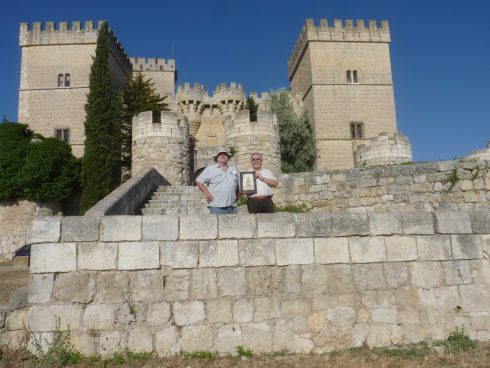
Ampudia certainly has some impressive assets, as well as its castle, including a majestic church and a couple of museums.
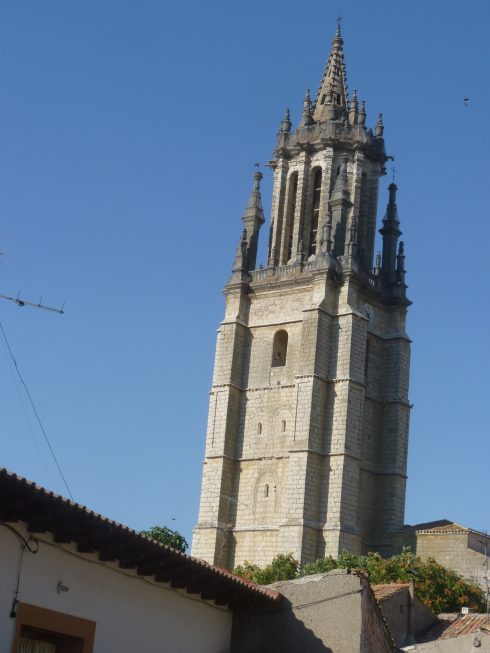
Its porticoed, medieval streets are a practical, aesthetic delight.
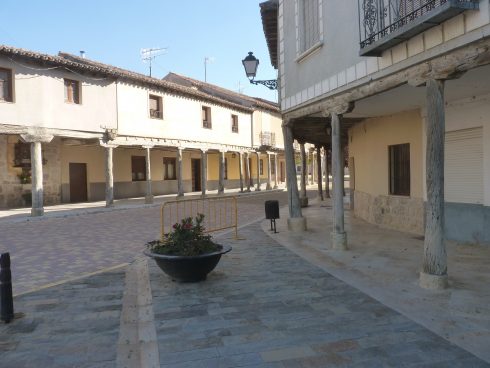
The talk was well attended and there was a lively debate which will hopefully lead to some kind of collaboration among those towns in Castilla León where films have been made.
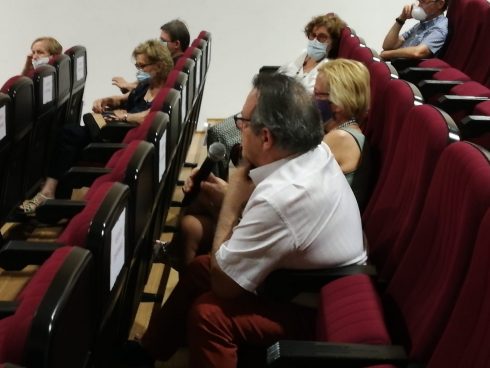
Afterwards there was a second lively discussion in various languages, including Thelma’s own mistreatment of several, with journalist Javier Perez and two of the Fontaneda family.
There were also some shorts shown at the event, largely the work of local enthusiast Epi, who described himself as an ex-squatter from his days in London.
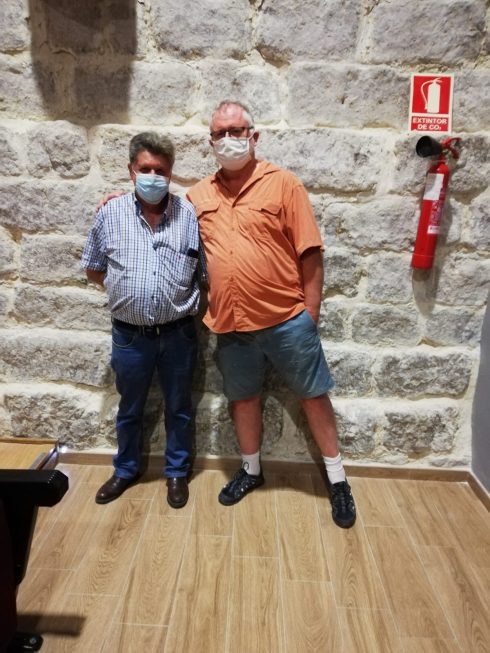
It’s often hard to work out who the baddies are in this film as some of the Moors fight on the Christian side to help a Christian king whose descendants will later churlishly have them expelled from Spain.
There is fortunately one Moor who dresses himself and his army in black, making things a whole lot simpler; although on the Christian side we have the bad sister Urraca (‘Magpie’ in English), who can’t decide whose side she’s on and plots to have one brother murdered to help the other brother, who starts out as a baddie but later, through El Cid’s example, becomes a good and wise king, Alfonso VI.
Torrelobatón and its striking castle in Valladolid province celebrated one of the greatest events in the history of this small village when 350 local people participated in the film as extras, as did a bunch of medical students from Valladolid University. The town represents Vilar, El Cid’s hometown in real life. Apart from the 350 good people of Torrelobatón, 1,500 Spanish soldiers and 500 police horses took part in the film. The horses were shamefully paid in hay!
Today, a permanent photographic exhibition in the castle recalls the film.
The famous jousting duel, supposedly to decide the ownership of Calahorra in Aragon, was filmed below the spectacular castle of Belmonte in Cuenca, Castilla La Mancha. The fact that Belmonte castle dates only from the 15th century trivialises what is otherwise a splendid duel.
Today you can still find the flattened land halfway up to the castle through some rabbit-infested shrubbery where the joust took place on what was previously a football pitch. The area is within the two walls that descend from the castle before enveloping the town, but which have now largely been demolished or used to build houses.
However, between the castle and the town, the two main walls are still intact, and on the one to your right, as you look up at the castle, is a small tower called Torre Albarana, where they filmed the scene in which Prince Sancho is stabbed to death.
Heston took his role seriously, taking fencing lessons on the pitch of the Real Madrid stadium. The swords were supplied by Hermanos Garrido of Toledo, where sales of swords to American tourists have diminished slightly now that it’s harder to smuggle them onto planes. Heston also took some bullfighting classes, but didn’t get around to putting them into practice in the film.
Various scenes of Charlton, with or without an army, galloping across snowy mountain scenery, were filmed in the Guadarrama Mountains, and particularly at La Pedriza and La Cabrera near Madrid.
These scenes include El Cid’s rescue of Prince Alfonso from the hands of some soldiers, and the ambush by a treacherous group of Moors.
Colmenar Viejo’s council has erected a photographic panel to commemorate the filming of El Cid in a chapel there called La Ermita de los Remedios. This chapel was used for the scenes where Sophia Loren is handed over to the protection of some nuns and is later visited by El Cid to see his daughters for the first time.
The final battle is for Valencia, although anyone who lives in Valencia wouldn’t recognise the town situated on a rock jutting out into the sea. If they go a bit further north up the coast however, into Castellón province, then they’ll recognise it as Peñiscola, famous for having been the home of Pope Benedict XIII (Papa Luna). The fact that Peñiscola castle dates from the 16th century is surely too nit-picking a point to be of consequence.
At Peñiscola filming took place between 8th February and 30th March 1960, with Heston and Loren staying at the Parador in nearby Benicarló. Peñiscola is certainly worth a visit out of season, when you can tear up the beach on your horse and imagine yourself attacking the castle without trampling naked Norwegian tourists; you can also look at the historic 20th century Moorish gates at the entrance to the city, built for the film and left as a gift for the people of Peñiscola.
Today visitors can stay at the El Cid camp site or eat in the El Cid restaurant; but, most important of all, they can stroll along the beach with its perfect view of the castle, and enjoy this spot where El Cid’s final, posthumous beach battle took place in the film.
The film was the beginning of Peñiscola’s tourism boom and current prosperity. Before the film was made there it had hardly had any visitors and was unknown to foreign tourists.
El Cid in reality didn’t die a martyr’s death as shown in the film, but in his bed, 5 years later in 1099. To make matters worse, Valencia was soon retaken by the Moors.

